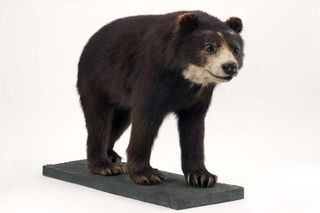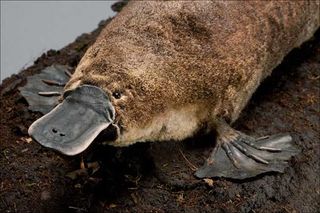Image Gallery: Evolution's Most Extreme Mammals
Spectacled bear

Native to South America, spectacled bears are named for their pale facial markings, which resemble glasses. These altricial placentals — mammals whose young are born immature — weigh two to three hundred pounds as adults but less than one pound at birth. They are skilled tree-climbers, and their remarkable ability to delay embryo implantation allows them to give birth to their young when food is most abundant.
Platypus

This placid-looking male platypus has a secret weapon: spurs on its hindfeet that are connected to a gland that produces toxic venom. Males use them against predators or in battles with other males during mating season. A strike from a toxic platypus spur can kill a dog. Native to the rivers of eastern Australia, platypus are monotremes—unlike most other mammals, monotremes never evolved live birth, but instead lay eggs like their amniote ancestors. Monotremes produce milk for their young but lack nipples; instead, their milk oozes out of ducts of their mammary glands onto specialized patches of skin.
Sign up for the Live Science daily newsletter now
Get the world’s most fascinating discoveries delivered straight to your inbox.













